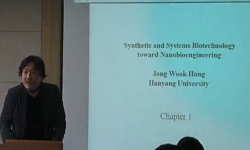Background: Onychomycosis has become one of the common fungal infection. However, highly reliable and sensitive methods of detecting and identifying causative fungi of onychomycosis are not established yet. Polymerase chain reaction (PCR) analysis of ...
http://chineseinput.net/에서 pinyin(병음)방식으로 중국어를 변환할 수 있습니다.
변환된 중국어를 복사하여 사용하시면 됩니다.
- 中文 을 입력하시려면 zhongwen을 입력하시고 space를누르시면됩니다.
- 北京 을 입력하시려면 beijing을 입력하시고 space를 누르시면 됩니다.


중합효소연쇄반응과 제한효소분석을 이용한 조갑진균증 원인 진균의 진단 = Diagnosis of Causative Fungi of Onychomycosis Using Polymerase Chain Reaction and Restriction Enzyme Analysis
한글로보기https://www.riss.kr/link?id=A19555263
- 저자
- 발행기관
- 학술지명
- 권호사항
-
발행연도
1999
-
작성언어
Korean
- 주제어
-
KDC
510.000
-
등재정보
SCOPUS,KCI등재
-
자료형태
학술저널
-
수록면
6-14(9쪽)
- 제공처
-
0
상세조회 -
0
다운로드
부가정보
다국어 초록 (Multilingual Abstract)
Background: Onychomycosis has become one of the common fungal infection. However, highly reliable and sensitive methods of detecting and identifying causative fungi of onychomycosis are not established yet. Polymerase chain reaction (PCR) analysis of clinical specimens including blood, sputum, urine, and cerebrospinal fluid collected from patient systemically infected fungus is known as a sensitive diagnostic method. But it has been questionable whether PCR analysis is also applicable to onychomycosis.
Objective: The purpose of this study was to develop a DNA-based diagnostic method to improve the sensitivity and specificity of detection and identification of pathogenic fungi of onychomycosis.
Methods: To detect the fungi in the nail, PCR was performed by using 4 sets of primer (TR1 & TR2, NS5 & NS6, B2F & B4R and CA1 & CA2) designed in conserved sequences of the small ribosomal subunit (185-rRNA) genes and restriction enzyme analysis of amplified product by Hae Ⅲ was done to identify species. Nail specimens were obtained from 19 cases of onychomycosis confirm by fungus culture.
Results:
1. Preparation of nail powder, which is necessary for removal of keratin, and composition of Iysis buffer with guanidinium thiocyanate, Tris-HCI, and β-mercaptoethanol are the most proper modalities for isolation of fungal DNA from fungus-infesting nails.
2. Specific fragments of the 18S-rRNA gene of fungi, 581 bp, 308 bp, 688 bp and 1106 bp were amplified respectively. From sequences of 18S-rRNA gene of fungi by universal primers, dermatophytes (Trichophyton rubrum, Trichophyton mentagrophytes) and yeast (Candida albicans)
yielded identical products.
3. Using Hae Ⅲ endonuclease, digested patterns of fragment of Trichophyton rubrum and Candida albicans resulted in different pattern.
Conclusion: This method released enough DNA from fungus-infected nails to result in proper amplification and it can be possible to differentiate dermatophytes, yeasts, and molds using Hae Ⅲ endonuclease. The present study is the first one to demonstrate the feasibility of this molecular biologic approach to identify fungi in the infected nail. Therefore, precise detection and identification of the causative fungi would be of help in investigating distribution of the causative fungi of onychomycosis as well as appropriate treatment of the disease.
목차 (Table of Contents)
- 1. 서론
- 2-1 실험재료:조삽분말 채집
- 2-2 실험방법
- 3. 결과
- 4. 고찰
- 1. 서론
- 2-1 실험재료:조삽분말 채집
- 2-2 실험방법
- 3. 결과
- 4. 고찰
- 5. 결론
동일학술지(권/호) 다른 논문
-
- 대한의진균학회
- 진상현
- 1999
- SCOPUS,KCI등재
-
- 대한의진균학회
- 서무규
- 1999
- SCOPUS,KCI등재
-
Epidermophyton floccosum의 최근 22년간 (1976~1997년)동향에 대한 고찰
- 대한의진균학회
- 안병준
- 1999
- SCOPUS,KCI등재
-
신생아 및 영아 피부에서 Malassezia 효모균의 분포
- 대한의진균학회
- 오창근
- 1999
- SCOPUS,KCI등재




 RISS
RISS


